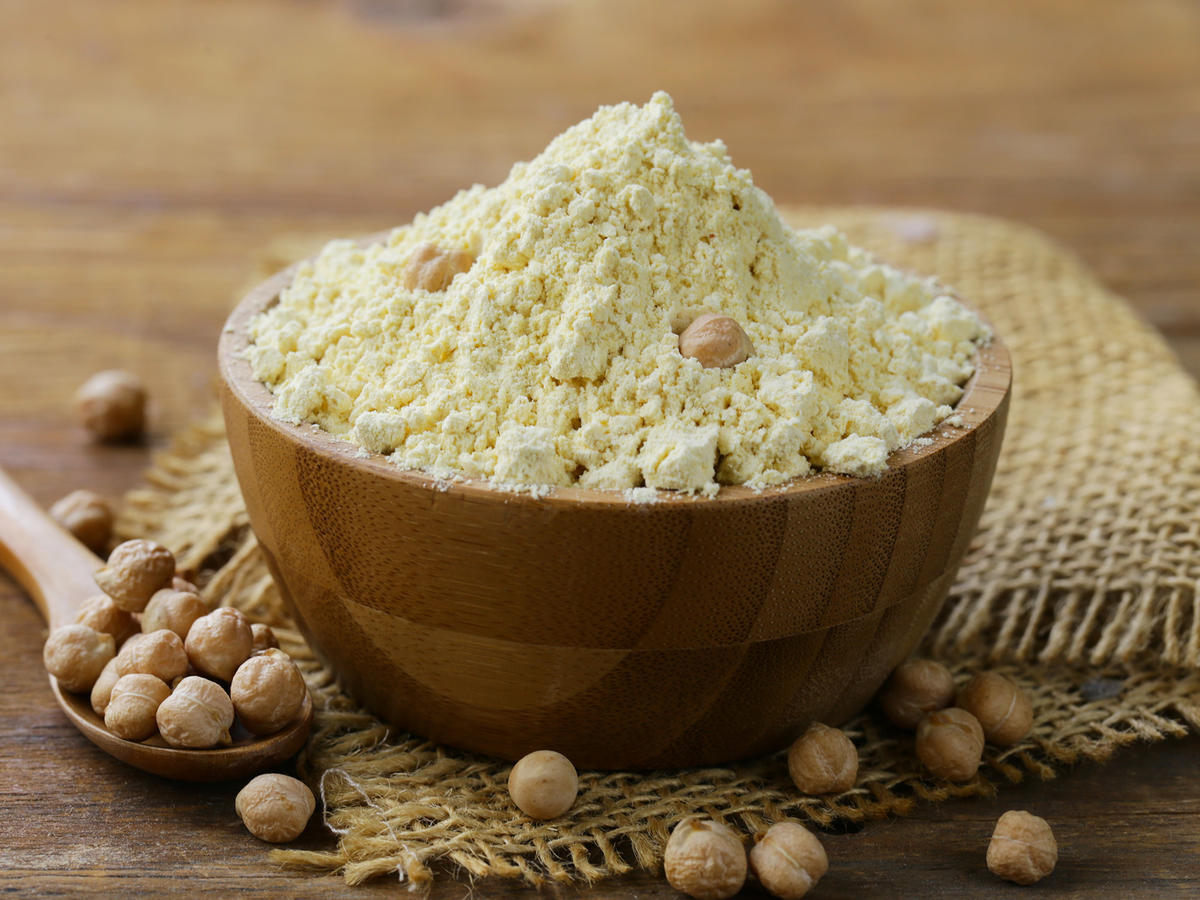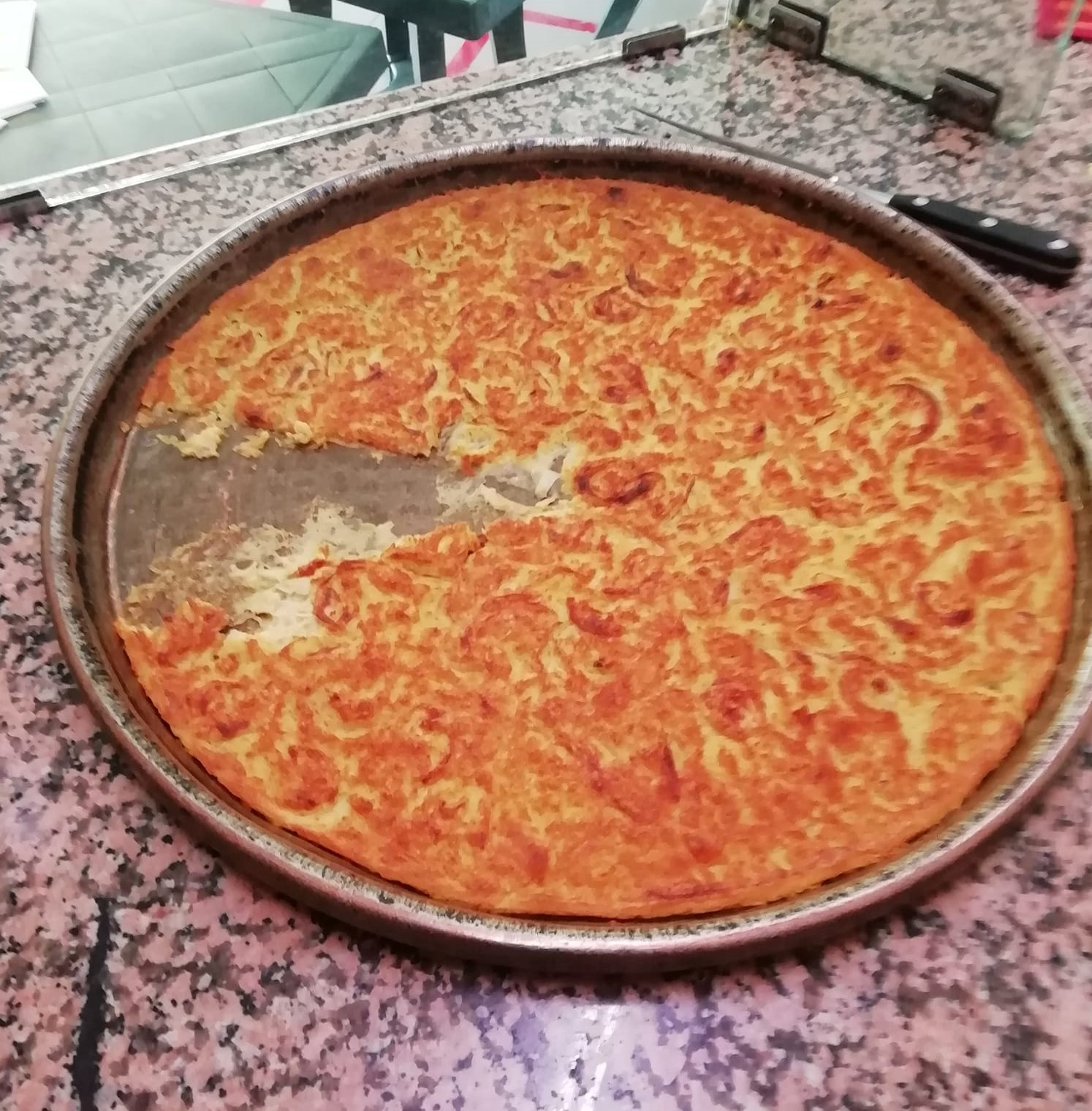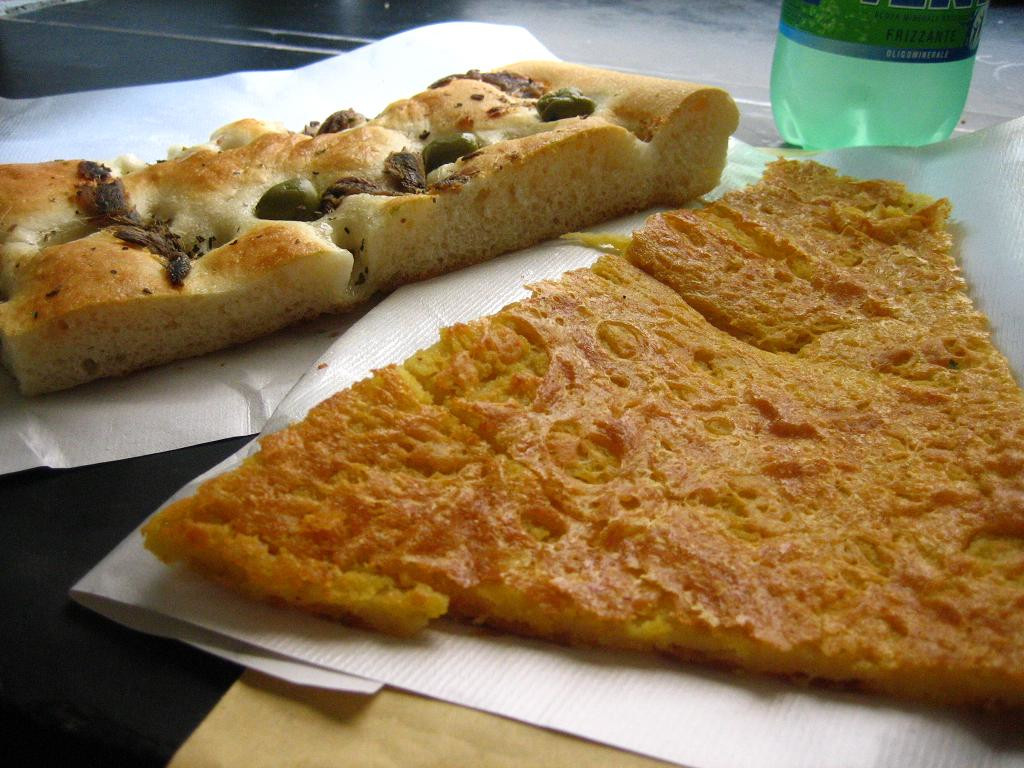Known as “farinata”, “cecina”, “5 e 5”, “socca” and with many more different names depending on the single town or region, the Italian chickpea flatbread is a traditional specialty widespread along the Italian west coast, from Tuscany to France and Nice. As golden as the sun, crispy (1cm/less than half an inch thick at maximum!) and incredibly mouthwatering, it has a super simple recipe: it is an unleavened dough made from chickpea flour, olive oil, water and salt, turned by expert hands into a true joy to the palate.
The origins - A story of sun, battles and sailormen According to some conoisseurs, its origins can be traced back to remote times, as far as the Ancient Romans. The ancient Latins did not know the beans (introduced to Europe from the Americas much later), but adored other legumes and made extensive use of chickpeas. They were maybe the first ones to prepare pies with mashed chickpeas, lentils and/or fava beans, and they could have been among the first to enjoy all their flavorful taste.
A famous story – probably a legend – ascribes the invention of the chickpea flatbread to a later period, to the full
Middle Ages, at the time of the Maritime Republics, when the commercial relations with the Arab world had widely spread the use of chickpeas in Italian culinary tradition. The year was 1284.
On August, the Battle of the Meloria marked the triumph of the Genoese fleet over the Pisan forces. The legend says that, on the way back home, the winners came across a violent storm that damaged a part of one galley’s cargo. The sea seeped through the hold with all its force and overturned some barrels of oil and chickpea flour. Everything was soaked with salt water and reduced to an unformed pulp.
The Genoeses, notoriously frugal, did not give up and did not consider - not even for a second - the option to throw the provisions away: they decided instead to nourish with them the Pisan hostages. At first, indeed, just a few of the prisoners were able to deal with the awful aspect of the food and most chose instead the fast, but only up to the following day. Suffering hunger pangs, then, they yielded…and the discovery was absolutely an
extraordinary one! This is probably not a true story, though it is thought to remind as an ancient lesson: as often happens in man’s history, chance circumstances and the case produce a superb result. Baked by the sun, the gruel had turned into an inviting focaccia, such a delicious one that, once landed, the Genoeses decided to perfect the recipe and name it “the gold of Pisa”, to mock the defeated enemies. Whenever and wherever this authentic, exquisite delicatessen was born, it has passed since then from generation to generation, to our day.
 A thousand and one “farinata” - Local nuances
A thousand and one “farinata” - Local nuances A dish of the poor cuisine, made of simple, cheap ingredients, but sensational for its taste and smell, the chickpea flatbread has hundred different versions and names: “cecina” in Pisa, “5 e 5” in Livorno, “fainè” in Sardinia, “socca” in Nice and in Piemonte, “calentita” in Gibilterra…you could continue for days!
Thanks to the Ligurian emigrants, who in the early XX century settled in Latin America, it has become an essential part of
popular cooking even in Argentina and Uruguay, where is traditionally served also as a pizza topping and named “fainà”.
As it is, pure and simple, it is a delicacy, but several local traditions use to serve it into bread or accompanied by sweet onions and sausage, as in the case of the fainà, or by cream cheeses, as gorgonzola or stracchino, as it happens in Pisa.
The version created by the “tortai” (pie makers) in Livorno known as “5 e 5” (pronounced: chinquay ay chinquay) is no doubt one of the most famous and tempting versions: it takes its name from the popular habit, born in the first half of the past century, to order 5 Lira cents of bread, traditionally the French type, and 5 cents of chickpea pie, enriching the whole with marinated aubergines.
 Where to taste it? The magic of the first bite
Where to taste it? The magic of the first biteEven if there is plenty of recipes to make it at home, the estimators claim that the chickpea flatbread has to be eaten on the street, freshly baked, still steaming and super crispy, possibly with a fine
dusting of black pepper or inside a focaccia, in front of a traditional bakery or strolling in the vibrant atmosphere of a historical center or seafront.
In the Liguria region, where it is very popular, it is served in designated street fried food shops known in the local dialect as “sciamadde” (burst of flames). In the past century, these specialized bakeries faced hard times and many of them shut, but they are now living a new moment of glory, thanks to the popularity of street food and to the revival of traditional cooking. It is also sold in the so-called “farinaterie” in Genoa or in specific places; in Sardinia and elsewhere it is often found in take-away pizzerias. In Nice the “socca” is also proposed by peddlers, who use to cook it or keep it warm on a rack resembling the one used for crêpes, and across the whole Côte d’Azur local restaurants often proudly praise “Aquì, si mangia la socca” (here you can eat socca) in Nice Provençal dialect.
Traditionally, it is baked in
firewood ovens, within large tin copper pans called “testi”, up to 40cm (about 16 inches) large in diameter, in only ten minutes, at an average temperature of 300 degrees Celsius (almos 600° F).
Watching a baker at work, who’s firmly holding and almost embracing the large pan and swinging it with rapid, circular movements to create small waves and spread the oil before pouring the dough, is pure magic. The acts are so fleeting that they turn out to be almost unnoticeable and mesmerizing, brimful of the charm of ancient gestures and prelude to delicious promises.
 A shot of health!
A shot of health! Its fragrant and crispy taste, its essence as a yummy street food and its sunny color would satisfy even the most demanding palate and aesthete.
If this is still not enough, however, the chickpea flatbread is also super rich in benefits for health: full of proteins, fibres, minerals (such as iron and magnesium), vitamin B and E, it assures a high level of energy intake, helps the metabolism and actively contributes to keep glycemia and cholesterol levels under control.
Thus, really no reasons to resist: ready for the first mouthwatering bite?


